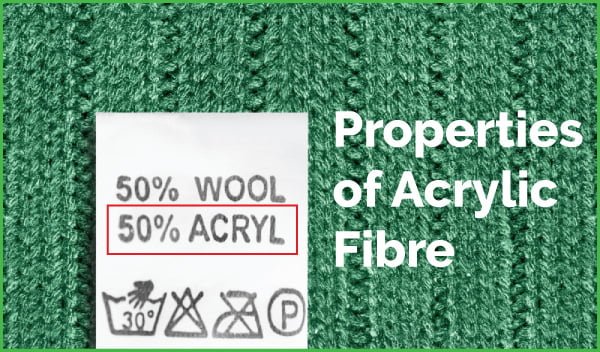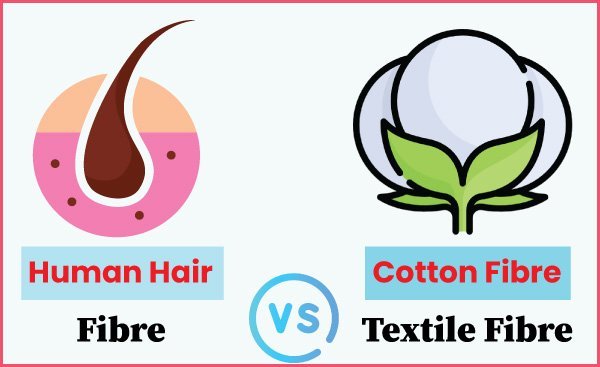7 Reasons Why Spider Silk is Incredibly Strong
Last updated on March 16th, 2024 at 05:38 am
Spider silk is one of nature’s most remarkable textile fibre, often acclaimed for its extraordinary strength. Beyond the intricate webs it constructs, it continually fascinates scientists, engineers, and artists alike, serving as an inspiration for innovative design and material science. In this in-depth exploration, we delve into the inherent properties of spider silk that make it such an exceptional material, capable of withstanding forces that far surpass those of mundane materials like steel or Kevlar.

Definition
Spider silk is a natural fiber spun by arachnids to construct webs and capture prey. Its strength and durability has been the subject of numerous studies, with findings highlighting its potential in various applications, from bulletproof vests to biodegradable plastics. Understanding why spider silk is incredibly strong is not merely an academic curiosity—it unlocks a world of potential in material science and textile engineering.
Why Spider Silk is Incredibly Strong?
Reason 1: Molecular Structure
The secret to spider silk’s strength lies in its molecular structure. Unlike the random and disorganized forms of cellulose or animal hairs, the molecular chains in spider silk align in a compact and orderly manner. This alignment is critical because it amplifies the material’s strength, creating a network that can distribute forces with greater efficiency.
Spider silk is primarily made up of proteins called spidroins, which consist of highly repetitive sequences of amino acids. When combined, these amino acids form crystalline regions, which are separated by amorphous sections. It’s this regular packing of spidroin chains that gives spider silk its robust structure and the ability to absorb and dissipate energy without falling apart.
The Beta-Sheet Marvel
One of the most fascinating aspects of spider silk is the creation of beta-sheets, a type of secondary protein structure that reinforces the silk strands. These sheets are formed when neighboring protein chains align and bond through hydrogen atoms, resulting in a stiff, lattice-like pattern that endows the silk with exceptional mechanical properties.
Reason 2: Protein Composition
Spider silk is not synthesized from a single type of protein but a combination of several, conjured from a complex genetic code within the spider. Each type of silk—ranging from dragline silk to capture silk—has its signature combination, influencing the silk’s properties, such as elasticity and stickiness.
A Polymeric Wonder
Spiders are capable of producing different varieties of silk, thanks to the assortment of spidroin genes at their disposal. This diversity reflects in their webs, with spiral threads that can be stretchy and resilient, while other parts, like attachment disks and egg sacs, are tougher and more rigid. This versatility in composition allows spider silk to adapt to a range of purposes, from construction to defense.
Reason 3: High Tensile Strength
Tensile strength measures a material’s ability to resist breaking when being stretched. In the case of spider silk, this strength is several times greater than that of an equivalent amount of steel. Under a microscope, spider silk is seen to be highly organized and aligned, which gives it the capacity to carry far more load than the jumbled proteins and fibers in most materials.
A Comparison to Marvel
When measured in tensile strength per ounce, spider silk can outperform steel. It’s this phenomenal strength per unit of mass that makes spider silk an incredibly desirable material. In practice, this could reduce the weight of large-scale applications, while providing the same (if not greater) strength and integrity.
Reason 4: Flexibility and Elasticity
Spider silk is not only strong, but it’s also remarkably flexible and elastic, able to stretch up to five times its original length without breaking. This property, combined with its strength, is particularly advantageous in applications that require materials to withstand varying stresses without failure.
Tough yet Stretchy
The elasticity of spider silk allows it to absorb energy from impacts without damage. This characteristic is valuable in biological applications, such as capturing prey, as well as in man-made applications demanding materials that can bend without breaking, like parachute cords or suspension bridge cables.
Reason 5: Lightweight Nature
In addition to its remarkable strength, spider silk is incredibly lightweight. This advantageous combination of high strength and low mass is something industrial materials are continually striving toward—a property critical in aerospace, automotive, and other weight-sensitive applications.
A Material of Minimal Mass
The lightweight nature of spider silk makes it attractive in the design of next-generation high-performance composites. These composites aim to improve fuel efficiency in transportation and increase the range of modular structures like satellites and spacecraft.
Reason 6: Resistance to Environmental Factors
Unlike many synthetic materials that degrade quickly under ultraviolet radiation or moisture, spider silk demonstrates a high degree of resistance to environmental damage. This natural durability lends it longevity and consistent performance in a variety of settings, regardless of the elements.
Nature’s Endurance Test
Spider silk is well-suited for outdoor applications and can maintain its properties in the face of harsh weather conditions. It’s little wonder that researchers are keen to understand and replicate the mechanisms behind this resilience, as they could be incorporated into other materials.
Reason 7: Potential Applications
The strength of spider silk opens doors to a multitude of potential applications across textile industries. As research advances, spider silk is becoming a material of growing interest for its biocompatibility, strength, and biodegradability, making it a standout candidate for a host of applications.
A Silk Road of Innovation
With its biodegradability and nontoxicity, spider silk could revolutionize the textile industry by providing a sustainable alternative to petroleum-derived fibers. Additionally, its potential applications in biomedicine, such as in drug delivery and tissue engineering, are vast. As we look to weave a better future with sustainable materials, spider silk holds the threads of innovation that can fundamentally transform industries.
Conclusion
Spider silk’s exceptional strength is not a fluke of evolution; it’s a marvel of natural engineering that continues to inspire and challenge the scientific community. As we unlock the secrets of spider silk’s strength, we are poised on the brink of a new era in materials science. In the coming years, we can anticipate breakthroughs that harness this incredible substance to address some of the most pressing challenges facing humanity. From sustainable textiles to advanced medical implants, spider silk may well be the thread that binds our future innovations together.
Here are five curated quotes highlighting the reasons why spider silk is incredibly strong, referencing the context provided:
- “Spider silk is five times stronger than steel—now, scientists know why; Thousands of tiny nanostrands make up larger silken ‘cables’.” – This quote underscores the microstructures within spider silk that contribute to its extraordinary strength. (Source: science.org)
- “Spider silk is extremely ductile, meaning it’s incredibly stretchy. That stretchiness, combined with the amount of force needed to break it when stretched, makes it stronger than steel.” – This quote explains how the combination of ductility and tensile strength makes spider silk so resilient. (Source: hamiltoncaster.com)
- “They exhibit a unique combination of high tensile strength and extensibility (ductility). This enables a silk fibre to absorb a lot of energy before breaking.” – Here, the focus is on the energy-absorbing capability of spider silk, which contributes to its toughness. (Source: quora.com)
- “In terms of strength-to-density ratio, however, spider silk is far stronger than steel.” – This emphasizes the efficiency of spider silk’s strength compared to its weight, highlighting its superior strength-to-density ratio. (Source: reconnectwithnature.org)
- “Spider silk is a protein consisting largely of the amino acids alanine and glycine. One attribute that contributes to its strength is that these particular amino acids are arranged in a way that makes the bonds very strong.” – This quote sheds light on the molecular composition of spider silk and how it relates to its strength. (Source: scienceline.ucsb.edu)
FAQs on Spider Silk
Here are 10 short FAQs about the topic “7 Reasons Why Spider Silk is Incredibly Strong”:
What is spider silk made of?
Spider silk is primarily composed of proteins, specifically spidroins, which are highly organized at the molecular level and contribute to its strength and durability.
How strong is spider silk compared to steel?
Spider silk is remarkably strong, with some types suggesting it can be up to five times stronger than steel of the same diameter, and also much more flexible.
What gives spider silk its tensile strength?
Spider silk’s tensile strength comes from its complex molecular structure, which includes chains of amino acids that interlock in a way that allows the silk to stretch and absorb energy.
Does the diet of a spider affect the strength of its silk?
Yes, a spider’s nutrition can impact the quality and strength of the silk produced, as proper nutrients are necessary for the production of robust spidroin proteins.
Are there different types of spider silk?
Spiders produce different types of silk for various purposes, such as webs for catching prey, lines for dropping down or escaping, and egg sacs for protecting offspring. Each type has unique strength characteristics.
Can spider silk stretch? How does this affect its strength?
Spider silk can stretch significantly without breaking, which allows it to absorb impact energy effectively, making it tough and resistant to breakage under tension.
Why is spider silk considered to be so durable?
Spider silk’s durability is attributed to its resistance to water and mildew, its ability to withstand chemical and physical stresses, and the tight molecular structure that prevents wear over time.
How do environmental factors influence the strength of spider silk?
Environmental factors like humidity and temperature can affect the properties of spider silk, but it remains incredibly resilient under most natural conditions.
Is spider silk biodegradable?
Yes, spider silk is a natural, protein-based material that is biodegradable, unlike many human-made materials with similar strength properties.
Are researchers trying to replicate spider silk?
Scientists and engineers are studying spider silk to develop synthetic versions, seeking to harness its incredible properties for use in textiles, medical sutures, and even bulletproof vests.



